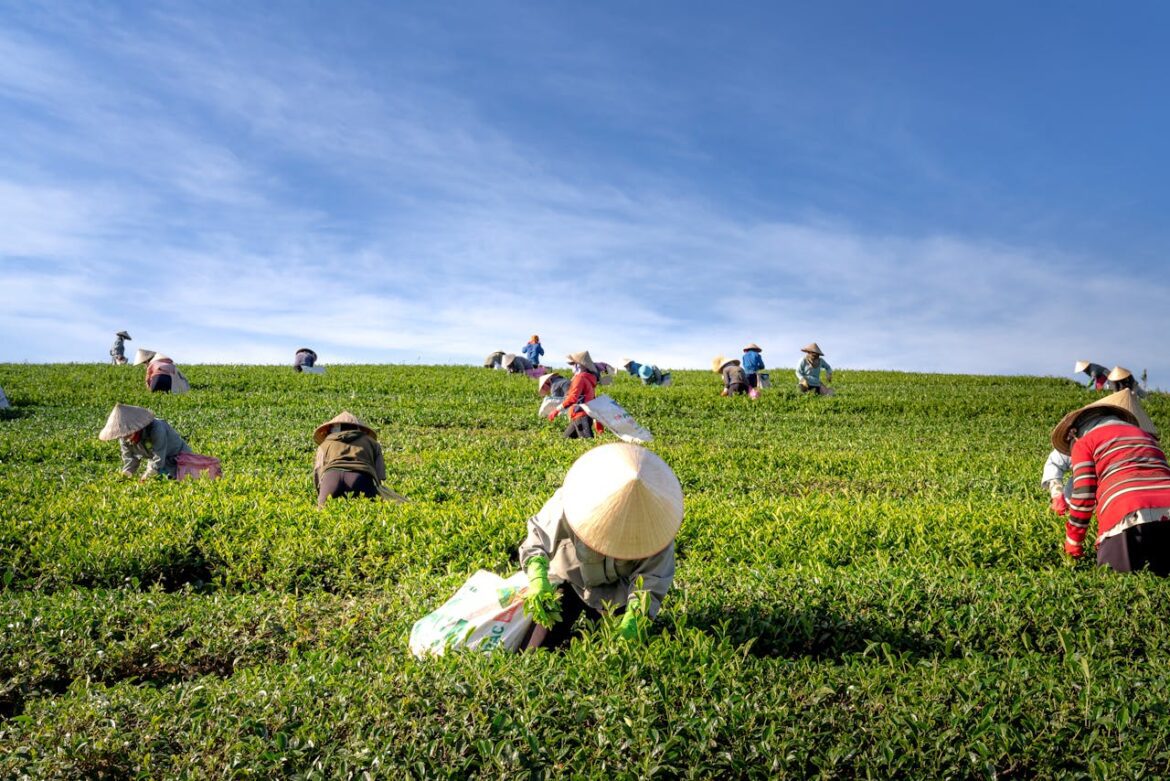The U.S. Agriculture Industry Embraces Artificial Intelligence in 2024
The agricultural sector in the United States is undergoing a significant transformation as it adopts artificial intelligence (AI) to enhance efficiency, reduce costs, and address pressing environmental challenges. This shift is proving to be crucial not only for a more productive industry but also for ensuring sustainable practices that can help the planet. The year 2024 is shaping up to be pivotal in this agricultural revolution, with farmers increasingly relying on AI-integrated solutions to navigate their operational hurdles.
Precision Farming with AI
At the core of this agricultural transformation is the concept of precision farming, which utilizes AI to enable farmers to make informed, data-driven decisions aimed at optimizing crop yields while conserving resources. By analyzing large datasets, farmers can better understand soil conditions, weather forecasts, and crop health. This leads to targeted interventions that can significantly maximize efficiency. As a result, farmers can apply the right amount of water, fertilizers, and pesticides at optimal times, minimizing waste and enhancing productivity.
AI Tools in Action
Various AI-powered tools are currently making their presence felt in the agricultural landscape. These tools facilitate a range of applications, including monitoring soil health, predicting weather patterns, and diagnosing crop diseases. Major companies in the sector, such as John Deere and Bayer, are leading the charge with platforms that integrate AI with cutting-edge sensors and satellite imagery. These technologies provide farmers with real-time insights, allowing them to make timely decisions that can prevent losses and boost overall yields.
As noted by fourth-generation farmer Emily Sanders, “AI allows us to farm smarter, not harder. We can use resources like water and fertilizer more efficiently.” This sentiment underscores the paradigm shift in agricultural practices as technology empowers farmers to enhance their operational strategies.
Autonomous Farming Equipment
Alongside precision farming, the rise of autonomous farming equipment is transforming the industry. Tractors and harvesters that operate independently are reducing the reliance on manual labor, a shift that is particularly vital in an age of labor shortages. These autonomous machines leverage AI algorithms to navigate fields, apply agricultural inputs with pinpoint accuracy, and avoid obstacles, thus improving overall efficiency. Startups like Blue River Technology are actively collaborating with agribusinesses to further these innovative solutions, making them more accessible to farmers.
Addressing Environmental Concerns
AI-driven precision farming is also playing a significant role in addressing various environmental challenges that the agriculture sector faces today. By minimizing runoff and reducing greenhouse gas emissions, AI technologies promote more sustainable farming practices. Algorithms that optimize planting and irrigation schedules can significantly conserve water and other essential resources, thereby protecting local ecosystems. This dual focus on productivity and sustainability is becoming increasingly critical amidst growing concerns about climate change and environmental degradation.
Barriers to Adoption
Despite its significant potential, the adoption of AI technologies in agriculture faces certain barriers, particularly among smaller farms. High upfront costs and the technical complexity associated with these innovations can make it daunting for smaller-scale operators to integrate AI solutions into their practices. However, governmental initiatives, including grants and subsidies, are helping to bridge this gap, offering support to farmers looking to adopt advanced tools. This wide accessibility is essential for ensuring that the benefits of AI in agriculture can be shared more broadly across the sector.
Looking Ahead
As we move further into 2024, the impact of artificial intelligence on the U.S. agriculture industry is expected to grow even more pronounced. With ongoing advancements in technology and increased emphasis on sustainability and productivity, the landscape of farming is set to evolve dramatically. Farmers who harness AI solutions can not only enhance their operational efficiencies but also contribute to a more sustainable future for agriculture as a whole.
Conclusion
In summary, the integration of artificial intelligence into the U.S. agriculture industry marks a significant leap toward a more efficient and sustainable future. By empowering farmers with advanced technologies that enhance decision-making, optimize resource use, and address environmental concerns, AI is reshaping the agricultural landscape. However, while the potential is vast, addressing the barriers to adoption will be key in ensuring that all farmers, regardless of size, can partake in this technological evolution. As we look ahead, the future of farming appears not only smarter but also more aligned with ecological sustainability, paving the way for a resilient agricultural sector.
FAQs
What is precision farming?
Precision farming is an agricultural practice that utilizes technology, including AI, to optimize yields and resource use by making data-driven decisions based on real-time information.
How is AI used in farming?
AI is employed in farming for monitoring soil health, predicting weather patterns, detecting crop diseases, and optimizing planting and irrigation schedules, among other applications.
What are the benefits of autonomous farming equipment?
Autonomous farming equipment reduces reliance on manual labor, minimizes operational costs, and increases precision in applying agricultural inputs, leading to enhanced efficiency and productivity.
Are smaller farms able to adopt AI technologies?
While smaller farms face challenges related to costs and complexity, government grants and subsidies are helping to facilitate access to AI technologies, making it more feasible for them to adopt these innovations.
How does AI contribute to sustainability in agriculture?
AI contributes to sustainability by optimizing resource use, reducing emissions, and minimizing environmental impacts, such as runoff and waste, thereby fostering more eco-friendly agricultural practices.

